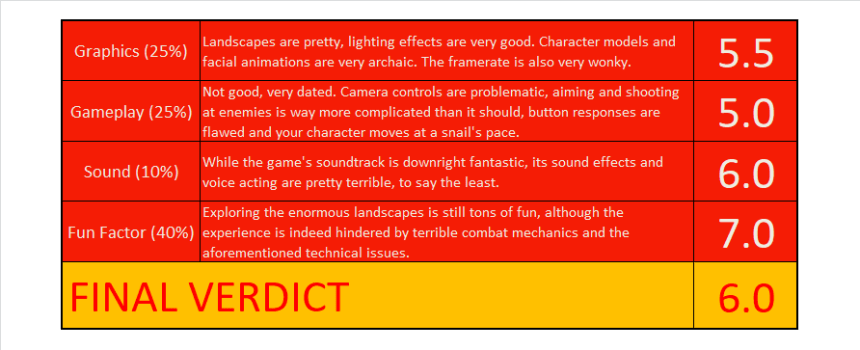Review – Outcast: Second Contact

Do you remember Outcast? No, I’m not talking about the rap duo that gave us classics like “Hey Ya!” or “Ms. Jackson,” but a PC game released in 1999 that can easily be described as the predecessor to Crysis in terms of needing a incredibly powerful hardware (for the time) in order to be played. The game featured some incredibly advanced elements for a 1999 title: gigantic open worlds, lots of voice acting, advanced voxel graphics, sandbox gameplay (two years before Grand Theft Auto III), and much more. The game didn’t exactly perform well, due to the fact most 1999 PCs couldn’t even run it on minimum specs, so it ended up being forgotten as the years went by. Sure, we’ve seen re-releases of the original game on GOG and Steam, but the title screamed for either a sequel or a remake for modern times. Outcast‘s original developer, Belgian studio Appeal, knew that was definitely something to be done and decided to deliver us a full-fledged remake of the 1999 classic. Here’s Outcast: Second Contact
Second Contact plays exactly like the original: it’s a third-person action RPG set in a vast futuristic universe, with lots of different areas to explore. Think of it as a 1999 Mass Effect. The gameplay was surely ahead of its time, acting more like an early Xbox 360 title, due to its freedom to explore, crafting system, groundbreaking character interaction and various sidequests. Sadly, that’s basically the main problem of this remake. While the visuals have been vastly improved (in most, but not all aspects; we’ll talk about that later), the gameplay hasn’t been improved for 2017 standards, leaving you with an early Xbox 360 title with a different coat of paint.

Excuse me sir, can’t we just talk?
After a somewhat interesting introductory video made with oil painting-esque storyboards, you’re thrown right into the revamped world of Adelpha, and then you start noticing the improvements and flaws from this remake. The world looks downright gorgeous this time around, given the fact voxels were abandoned in favor of actual polygons this time around. Environments are lush, lighting effects are beautiful, and the draw distance is sublime. The game truly shines in this aspect. A lot of other problems quickly show up, however.
First of all, character models. Besides your okay-at-best protagonist character model, everybody else looks extremely dated, with incredibly archaic facial animations, body animations, polygonal count and even the fact most of their joints don’t actually move. For instance, character hands don’t move at all, including your own protagonist.

A true role model of positivity.
Another severe issue lies in the sound department. While the orchestral soundtrack remains as sublime as it used to be, evoking the feeling of an epic space opera, the sound effects and voice acting are basically unchanged. I was initially fooled into thinking the voice acting had been improved by the fact the intro cutscene featured crisp uncompressed voices, but once the game actually started, I was greeted with grainy and compressed voice acting, reminiscent of a game from 1999. Don’t even get me started with the actual bad deliveries. The biggest offender in this aspect, however, is the sound effect department. Once I started venturing through the first map and started fighting some enemies, I started noticing something weird everytime a foe got shot. The sound effects those foes would shout were the exact same effects from Goldeneye 64, a game from freaking 1997. Not only that, but the level of compression was also the same as the 20 year old title. I love Goldeneye, but seeing its sound effects in a 2017 game made me feel disappointed, not nostalgic.
Finally, I need to talk about the gameplay, and how it’s worse here than in the 1999 original. Second Contact features one of the most inconsistent framerates I’ve seen this year, and that has serious repercussions on the gameplay. The input lag is, well, bad. Very bad. The simple act of jumping from one platform to another one mere foot away from it turned out to be a relentless task given the bad control responsiveness. The overall combat didn’t age as well. Sure, Outcast isn’t a game that puts emphasis on combat, but given the tremendous amount of rabid enemies constantly shooting at you, you’ll need to fight some people every now and then, and it’s not very enjoyable, given the input lag, overall dated aiming system, very slow camera movement, and the fact your character moves at a snail’s pace. For your own sake, just stick to exploring and avoid combat whenever you can.

Grumpy Marine. Oil on canvas. 1999.
While revisiting the world of Adelpha surely brought out some great nostalgic feelings, I was mostly disappointed with this remake of Outcast. While it did age better than most games from the 90s, it still didn’t age that well for modern standards. It’s still a fun game, but its severe technical issues and wide array of unpolished elements made this version less entertaining than the original one, that is widely available in most PC online stores and can be played on basically any computer released after 2001 nowadays. It was great to revisit this old friend, but he surely needs to stop wearing these Limp Bizkit t-shirts, and maybe do one or two plastic surgeries for his own sake.

Reviewed on Xbox One.
Also available on: PS4, PC.
